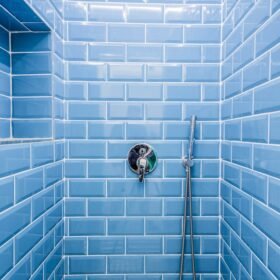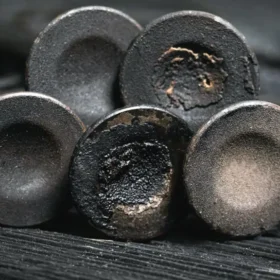When planning a flooring project (Extra Flooring to Buy) for your home, one important consideration is how much extra flooring material to purchase. It’s essential to buy an appropriate amount to ensure you have enough to cover your space while accounting for any mistakes, cutting waste, and future repairs. In this article, we’ll provide you with a guide on how to determine the right amount of extra flooring to buy for your project.
Understanding the Importance of Extra Flooring
Having extra flooring material is crucial for several reasons. First, it allows you to account for any measurement errors or inaccuracies during the installation process. Second, it provides you with spare material for future repairs or replacements in case of damage or wear. Lastly, it ensures you have enough flooring to accommodate any pattern changes or directional shifts in your space, enhancing the overall aesthetic appeal of the installation.
Measuring the Area
Before calculating the amount of extra flooring to purchase, you need to accurately measure the area you plan to cover. Measure the length and width of each room, and multiply these dimensions to find the total square footage. For irregularly shaped areas, break them down into smaller, more manageable sections and calculate the square footage individually. Add up all the individual areas to determine the total square footage for your project. Extra Flooring to Buy
Accounting for Cutting Waste
When installing flooring, there will inevitably be cutting waste. Cutting waste refers to the material that is trimmed and discarded during the installation process. The amount of cutting waste can vary depending on factors such as the type of flooring, the complexity of the room’s layout, and the skill level of the installer. As a general rule of thumb, it’s recommended to add an additional 5-10% of the total square footage to account for cutting waste.
Considering Pattern and Direction Changes
If your flooring design involves patterns or changes in direction, you’ll need to purchase extra material to accommodate these variations. Patterns, such as diagonal or herringbone layouts, may require more material to ensure a seamless and visually appealing installation. Similarly, if your flooring transitions from one direction to another, additional material will be needed to maintain the desired flow and continuity. Consult with your flooring supplier or installer to determine the recommended amount of extra material for pattern and direction changes. Extra Flooring to Buy
Including an Allowance for Mistakes and Repairs
It’s essential to account for potential mistakes and the need for future repairs when buying extra flooring. During the installation process, errors can occur, leading to the need for replacement pieces. Additionally, over time, your flooring may experience wear and tear or sustain damage that requires repairs. To be prepared, it’s advisable to add another 5-10% to your total square footage as an allowance for mistakes and repairs. Extra Flooring to Buy
Calculating the Total Flooring Quantity
To calculate the total amount of flooring material to purchase, follow these steps:
Calculate the total square footage of the area to be covered.
Add 5-10% to account for cutting waste.
Consider any pattern or direction changes and consult with professionals if needed.
Add an additional 5-10% to allow for mistakes and future repairs.
By following these steps and considering the various factors mentioned, you can determine the total quantity of flooring material to purchase for your project. It’s important to note that it’s always better to have slightly more material than you need rather than falling short during installation. Extra Flooring to Buy
Once you have calculated the total flooring quantity, it’s recommended to consult with your flooring supplier or retailer. They can provide guidance on the specific packaging options available and help you determine the most cost-effective way to purchase the required amount of flooring.
Conclusion
When planning a flooring project, it’s crucial to buy the right amount of extra flooring material. Taking measurements accurately, accounting for cutting waste, considering pattern and direction changes, and including an allowance for mistakes and repairs are all essential steps in determining the quantity of flooring to purchase. By following these guidelines and consulting with professionals when needed, you can ensure a successful flooring installation and have peace of mind knowing you have enough material for your project. Extra Flooring to Buy
FAQs
Q1. What if I underestimate the amount of flooring I need?
Ans. Underestimating the amount of flooring you need can lead to complications during the installation process. It may result in delays, additional costs, or even the need to purchase more material later. It’s always recommended to buy slightly more flooring than you think you’ll need to avoid such situations.
Q2. Can I return unused flooring material?
Ans. Return policies vary among different suppliers and retailers. Some may accept returns of unopened and unused flooring material, while others may have restrictions or charge restocking fees. It’s advisable to inquire about the return policy before making a purchase.
Q3. Should I keep extra flooring material after installation?
Ans. It’s a good idea to keep any extra flooring material after installation. It can be useful for future repairs or replacements in case of damage or wear. Store the extra material in a safe and dry place where it won’t get damaged or lost.
Q4. Can I use the leftover pieces for another flooring project?
Ans. Using leftover pieces for another flooring project depends on factors such as the size and condition of the leftover pieces and the requirements of the new project. It’s recommended to consult with professionals to determine if the leftover material is suitable and sufficient for another installation. Extra Flooring to Buy
Q5. How long should I keep extra flooring material for repairs?
Ans. It’s advisable to keep extra flooring material for as long as you have the installed flooring. This ensures that you have matching material available in case repairs are needed in the future. Store the extra material in a labeled and easily accessible location.
In conclusion, determining the right amount of extra flooring material to purchase is essential for a successful flooring project. By following the steps outlined in this guide and considering factors such as cutting waste, pattern changes, and future repairs, you can ensure that you have enough flooring material to complete the installation and address any future needs.







